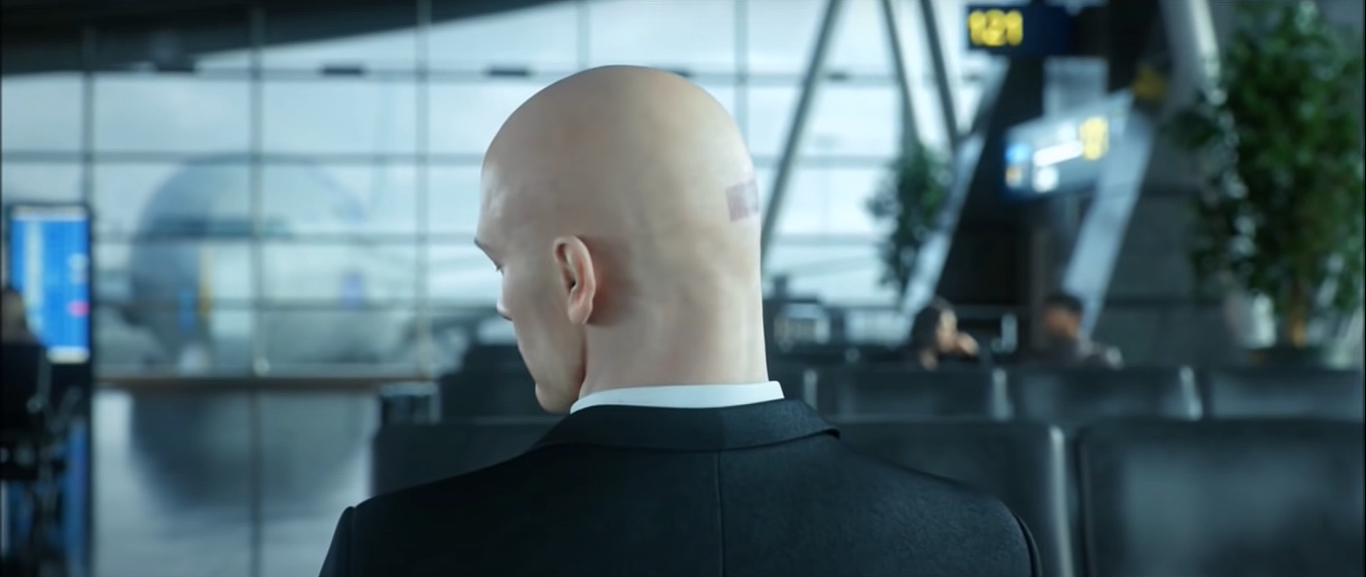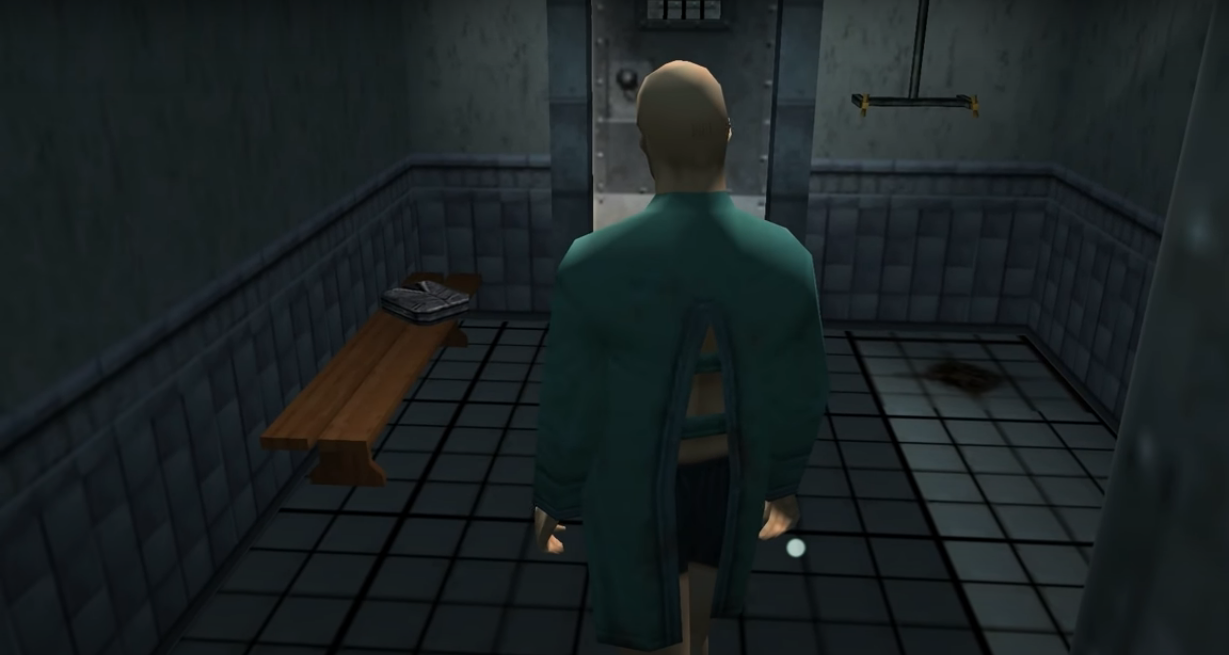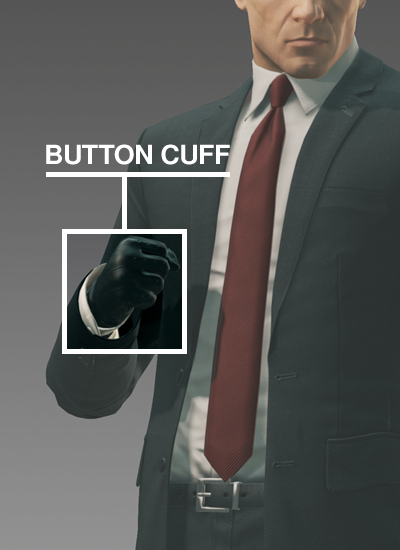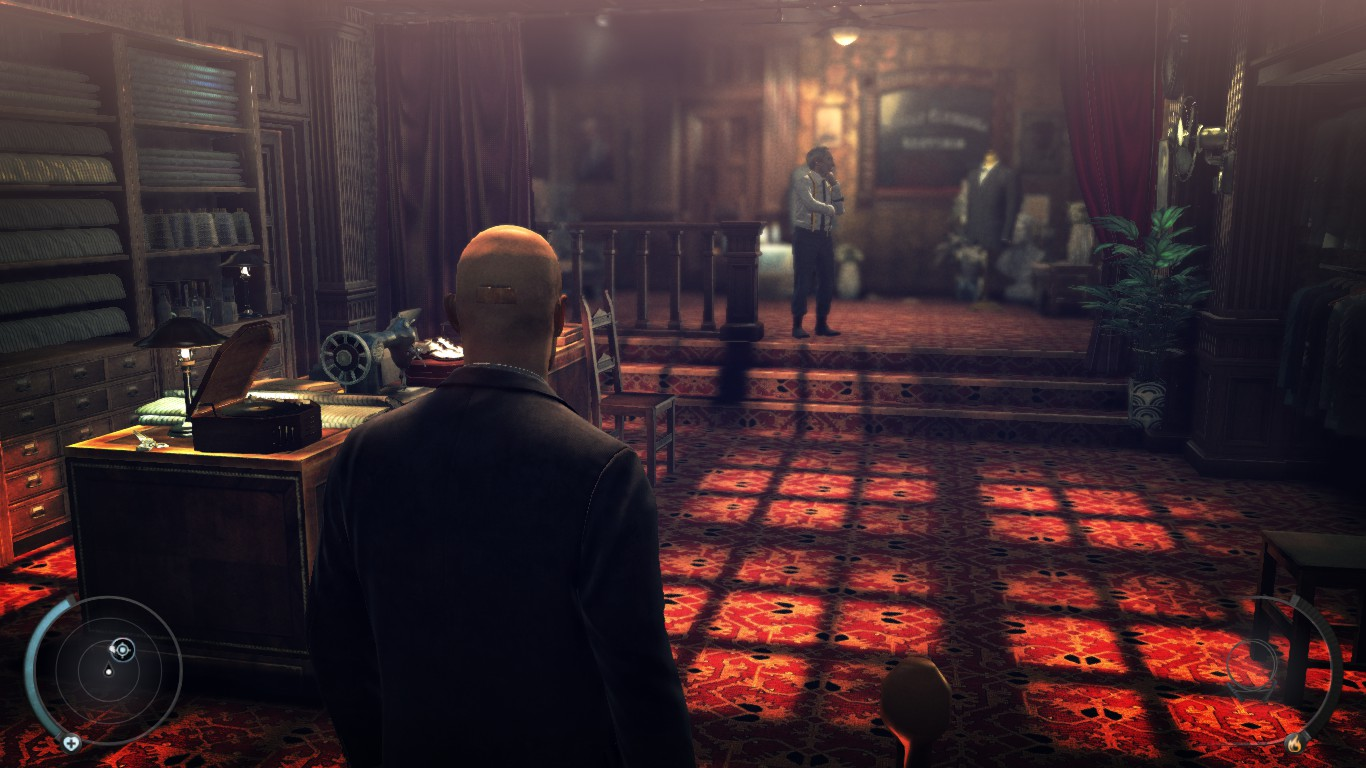
When you think of Hitman, a single image comes to mind - a pale, bald man in a black suit and a blood-red tie. The look has become so iconic that when a bald man showed up in a subway car wearing the outfit, the Internet was unanimous: “Someone ain’t making it off that train.” The man didn’t look like 47 apart from his style and lack of hair, but 47 was bred to be forgotten, a police artist’s worst nightmare. In his suit, he’s a legend. As soon as he dumps a bystander in a crate, glances over his shoulder, and pats himself down, he’s gone. After all, without his trademark, he’s just another orderly. Or cop. Or bodyguard. Or waiter. Or drummer in a band.
In the modern working world, a suit is both specific and general. It communicates that the wearer is a member of a sphere that requires a level of formality in its day-to-day affairs. But because basically all white-collar professionals wear them - hence the name - it doesn’t point to any particular line of work. 47 could be a lawyer. A government staffer. An executive. He could work in film finance, on Wall Street, or at a funeral home. When he was younger, the suit could have implied to passersby that he was off to an interview, ambitious and upwardly mobile. Now, as a gentleman of a sterner, more ambiguous age, 47’s choice of clothes conveys authority. (I would say “middle-aged,” but honestly, look at him. The man is aging backwards. Weird trick from Dr. Ort-Meyer: dermatologists hate him!)
Admittedly, the barcode throws this for a loop. When you pair professional wear with a visible tattoo, it adds a texture of aggression, especially in the circles that 47 infiltrates. Among the elite, it could raise suspicion that he’s an ex-con, or associate him with tough-guy jobs like private security. But so many NPCs are so out-to-lunch about their cook and guard losing their hair all of a sudden that it’s silly to fixate on it. At the end of the day, 47 is a tall, serious-looking man in an expensive suit. That alone will grant him the privilege of entry into many places that other people in other clothes wouldn’t have access to. He simply looks like he should be there for something important, even if people don’t recognize him or are unsure what his business is. Conmen like Frank Abagnale have said that the success of their tricks hinged on how casually they could inhabit a place as though they belonged in it. Of course, this won’t get 47 far when he has to rough it in Siberia or the Colombian jungle, but that’s what disguises are for. Or sneaking skills.
That’s one way to solve the problem, I guess.
How did 47 develop such a soft spot for suits? Like many things in Hitman, there’s more than one possible source. In fact, I think now is a good time to pause and say that many narrative elements in Hitman contradict themselves. The series has increasingly retconned itself over time, an occupational hazard for an IP that’s been around as long as it has. Some of these changes have been minor. Some were more significant. Its tie-in stories hang in limbo, not technically canon but influencing certain game details. This means it doesn’t behoove us to tie ourselves into knots over whether a pair of socks or a backstory detail is still relevant in Hitman III. We have the whole portrait that IOI has painted for us to work with, and we can admire both the topcoat and the X-ray underneath. If an image made it into a game, it was true at some point, and all of them are potentially interesting. As 47 put it, “I’ll choose the truth I like.”
So, when 47 wakes up in the opening of Codename 47, he has a suit waiting for him on the other side of the asylum door. With nothing else to go on, it’d be easy to assume that Ort-Meyer chose it for him, and 47 keeps it up out of habit, in lieu of a preference for anything else. The number 48s that he faces down in the asylum wear it, too, which supports this theory, especially since dressing them in identical outfits would discourage them from developing a sense of individuality.
Meet cute.
However, another account states that during an escape attempt, 47 fled to a nearby town and was captivated by its high-end clothing stores. As I said, IOI has retconned many details of 47’s youth. It’s not clear whether they’ve excised this specific escape attempt. I’d be disappointed if they did, because I find it charming, and I like what it suggests about 47’s relationship to his suit. The few times we see other ICA agents in the flesh, they’re either incognito or wearing impersonal tactical clothes. (Apart from the Saints, but, well… we’ll talk about them later.) Next to them, 47’s meticulous dress code stands out, and because it’s not required of him, it speaks of something he does for himself. 47 can choose what he wears. He doesn’t choose much else about his life, and people in that situation tend to attach deeply to the things they can control. In that context, the suit serves as one of 47’s only avenues for self-expression - both unique and uniform, both commonplace and something he can call his own.
Like the narrative canon, the particulars of 47’s signature suit have evolved over the years. The basis premise stays the same, though: a black blazer and pants, a white shirt, a red tie, and a sensible pair of shoes. Ingame images can be subject to the cruelty of graphics settings, but in this case, we’re lucky. We have a clean set of blueprints. On ArtStation, character artist Louie Ishii has posted the turnaround of the suit that he modeled for the 2016 game. Per Häggmark has also given us a full-color turnaround of the suit model that appears in Hitman III. This means we can zoom in and analyze his suit in full detail. So strap in and make yourself comfortable. We’re going down to the seams.

47’s suit is a deft marriage of style and stealth: fine materials well-tailored in basic shapes. The keywords are “studied ordinary.” Every choice 47 has made in his suit cut is designed not to call attention to itself. This starts with the suit jacket, the piece with the most moving parts, and therefore the place where custom suits get the most tinkering. He begins with notch lapels, the most common lapel shape. They’re neither formal nor informal. They go with everything. The jacket is single-breasted, a good match for a notch lapel, and it has two buttons, both standard options that don’t warrant a double take. Lightly padded shoulders. Three or four cuff buttons. Nothing to see here. A welted breast pocket with no decorative pocket square. He finishes the trimmings off with two flap pockets on the hips. Only two, even though a third would let him stash more tools of the trade. 47 strikes me as the kind of guy who’d appreciate a ticket pocket, but again, a highbrow choice like that would flag him as unique. The details that connoisseurs use to make their suits look luxurious are the very details that could expose him to scrutiny.
In the back, 47 has chosen double vents, or those two splits in the fabric along the hem. Jackets with one vent are simpler and cheaper to produce. They’re the go-to for casual wearers and American businessmen. Double vents, by contrast, are more of a British look, and they really need to fit right, which - of course - means tailoring. Double vents are a sign of a wearer with a discerning eye, but that’s not all. They give you a greater range of arm movement. For a man like 47 who has to crouch, climb, and shimmy up poles, that’s critical. His suit should move as fluidly as the body wearing it.
47 leaves his jacket unbuttoned a lot, which, for the very finicky, is not strictly Le Thing. On a two-button suit, you’re supposed to button the top button when you’re standing, then unbutton it when you sit down so the suit doesn’t crease. To be realistic, it probably comes down to the fact that cloth is temperamental to model and animate. That level of clothing dynamism is an impractical stretch goal in game development. It costs precious time and money, and most players won’t care. On a narrative level, like the vents, a buttoned jacket might hold him back in the climactic moment of the head bash or garrote. The last thing he’d want is to catch his arm in his own sleeve mid-chokehold, or his next outfit might be a body bag.
When it comes to fabric, I assume the suit is worsted wool, and of course, 47 opts for a deep, solid black. As cool as a black suit looks, it’s actually a risky choice for a man whose goal is to blend in anywhere at any time. Businessmen who want a dark suit tend to go with charcoal gray, because black is very formal, and, in the daytime, can come across as severe. There’s one big exception. Black is appropriate at daytime funerals, which adds a note of, well, black humor to 47’s choice. 47 opts for the color of an undertaker because he is one. It’s a reaper’s shroud. He passes through a room, and someone ends up dead. And because the cut of his suit is unremarkable, the color gives him at most an air of the bodyguard, not anything more suspicious. A lot of this arcane color etiquette has eroded within my lifetime anyway. When’s the last time someone scolded you for wearing white after Labor Day?
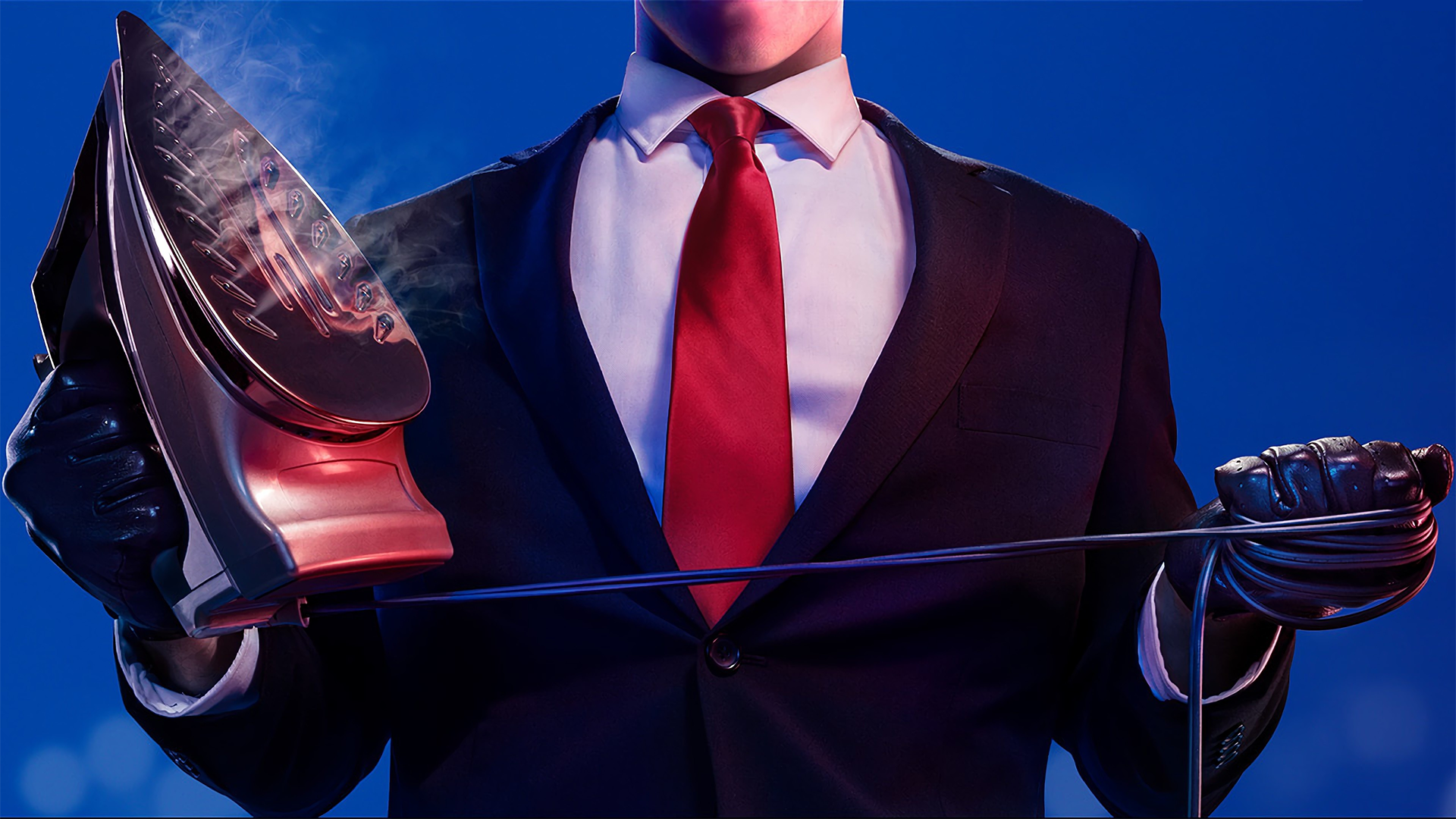
A white dress shirt is the foundation garment of the man-about-town. It matches every color. It provides a clean, blank base to build upon. Like 47’s other tailoring choices, he goes for a universal style that complements every suit cut. The shirt features a point collar, which the reboot trilogy’s ingame description identifies outright. I love when the narrative team helps. However, we can also identify the collar by its shape: medium-sized triangles that sit a medium distance apart. (If you’re having trouble visualizing different collar shapes, compare 47’s to the full-spread ones that Mads Mikkelsen wears in Hannibal. They draw your attention, don’t they? The opposite of what 47 wants to do.)
Killing must feel good to God, too, 47.
We can’t always get a good view of the cuff situation on 47’s shirts, but for the most part, he seems to choose button cuffs over French cuffs. If you look closely at the signature suit icon in Hitman - the one where he has his fist up - you can see a notch where the fabric crosses over, the telltale sign of a button cuff. We see the same notch in the Hitman 2 promotional art, as well as pretty much any other shot where his jacket sleeve hikes up. Now, let’s not be unreasonable about this one. The man is a putative multi-millionaire. He probably owns more than one shirt.
What’s the difference? They’re both appropriate to wear with an everyday business suit. But French cuffs use more fabric and are more formal than button cuffs. They require attaching separate cufflinks to keep them closed, an accessory that you can sink a lot of money into if you’re so inclined. From a fashion standpoint, French cuffs would pair nicely with the formality of 47’s suit. From a gameplay one, they’d be ludicrously impractical. 47’s whole thing is taking his suit off as fast as possible, and with a dress shirt, you can’t just slide your hands out of your sleeves. He’d have to wrestle with the cufflinks every time he donned a disguise. What if he lost one? Talk about an argument in favor of a Suit Only run.
47’s ties float between different shades of red, all of which evoke a trail of blood down his front. In Absolution, it’s a warm, loud red, fitting for the feverish atmosphere. In the reboot trilogy, it’s more of a burgundy. The knot is - look, I’m going to be honest. I’ve stared at a dozen diagrams. It’s not that easy to tell whether it’s a four-in-hand or half-Windsor. The knot’s smaller size might suggest a four-in-hand, and it’s easier to tie and untie, which would make it more practical. However, it’s wider and more symmetrical than a four-in-hand, and he’s added a dimple below it, which implies an extra moment’s thought. Whatever his knot choices, we know the tie has to be silk. I can’t imagine 47 settling for anything less.
In the official art for the early games, 47 had a bolder look, wearing a striped tie and a shirt with a thin, dark pinstripe. We only see it ingame in Blood Money. I have to confess, I’ve always found this version of 47’s shirt and tie funny. It’s just so… perky? It reminds me of an Eighties executive. Look at 47, injecting colors and patterns into his life. I guess if you can’t go blonde, you have to find other ways to experiment.
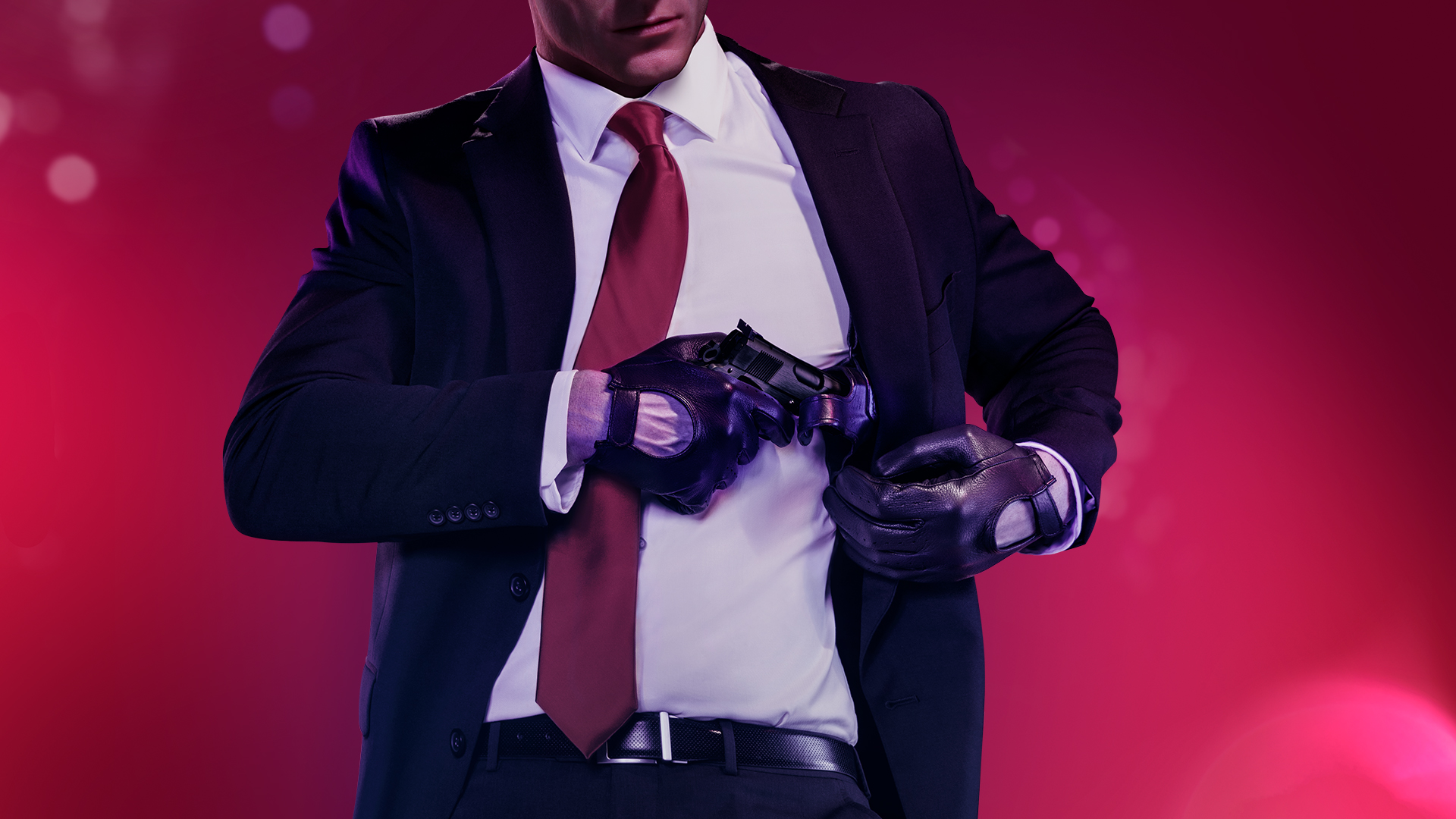
Ah, yes. The gloves. The dark horse of 47’s suit. The favorite of Hitman fan communities everywhere, and to the developers, probably the most infamous. Every time IOI debuts a new iteration of 47’s suit without them, fans have something to say about it. After this many years, I’m not sure whether the pre-release no-gloves kerfluffle is genuine or done out of a sense of tradition, a running joke. Either way, the reboot trilogy took the fandom in stride and offered “with gloves” versions of his starting suits as level mastery rewards. Hey, you can’t accuse them of not knowing their audience.
When 47 does wear gloves, he favors one of two styles - a basic dress cut that covers the entire hand, or driving gloves, which have a wrist strap and cutout on the back. They serve a practical purpose: for him to not leave fingerprints, although I’d be surprised if 47 had fingerprints to begin with. (I believe Ort-Meyer bred him to grow no body hair except his eyebrows, so he was clearly scrupulous about biological evidence.) We associate driving gloves so strongly with contract killers and thieves in action movies that it’s easy to forget their mundane origins. The first cars either had wooden steering wheels, which could give the driver splinters, or bare metal ones, which could be dangerous to touch in extreme temperatures. Driving gloves emerged as a way to protect the driver’s hands and, later, to improve their control and grip during a race. Though there’s nothing inherently sinister about them, when we see them on a man like 47, we just know we must be up to no good. It’s a classic example of how social perceptions can change over time. Textiles may not have opinions, but clothes are never neutral.
While we can’t tell whether 47’s gloves are lined or not, the leather must be very thin and supple for him to retain full dexterity. I love my leather gloves, but I’ve tried to play the piano in them, and it’s like trying to pilot hot dogs mounted on pancake turners. I certainly couldn’t assemble a sniper rifle or pick a lock. When it comes to 47’s hands, it isn’t just about having the best for the sake of it. It could be a matter of life or death.
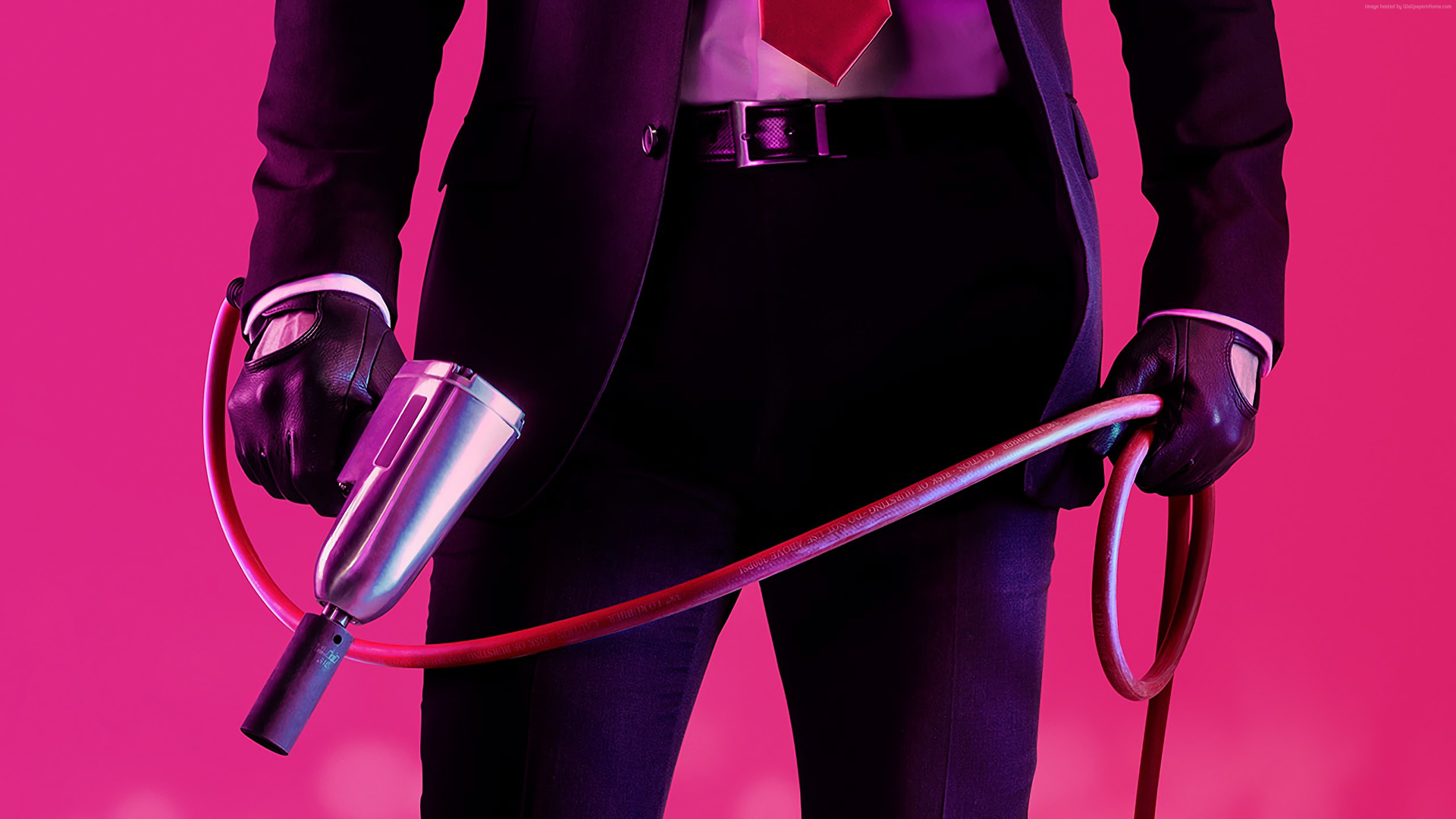
Let’s be honest, pants aren’t as interesting as the other parts of a suit. They’re there because it would look silly not to wear them. (Now you’re picturing it, aren’t you?) Special features like Neapolitan waistbands are the purview of the small set of people who even know about them in the first place. The main effect of a pair of suit pants comes down to how long and how tight they are, and that’s largely a matter of trend. Different decades have had different ideas about how loosely or snugly pants should fit, and 47’s have always reflected the dominant style of their time. In earlier installments, they were more boxy. In the reboot trilogy, he’s slimmed them down, as the fashion world has considered this more crisp for the past few years. As a tall, lean man, 47 could go slimmer if he wanted to, but considering his job, it’s safer to err on the conservative side. They’re also a moderate length with a moderate break, or the wrinkle at the ankles created when the hems skim the tops of his feet.
Shoes, on the other hand, present a surprisingly diverse opportunity for men to accessorize. Cap toes, wingtips, tassels, lacing style, and more can all affect the level of formality - and comfort - in a man’s dress shoe. Believe it or not, some men’s shoes can actually be uncomfortable, and this would influence 47’s buying in the same way as his jacket vents. Can he stand in them for hours, if the job requires it? Can he run? Can he bend his foot to climb? Can he walk long distances? And yet he can’t be too utilitarian. Whatever shoes he wears still need some semblance of style, or they’ll make people suspicious. Every streetwise rebel knows that the most obvious tell of an undercover cop is unusually sturdy shoes.
So 47 has gone with the derby, the oxford’s more casual cousin. Less fussy, but still dressy enough to pair with a suit. How can we tell the difference? Look at the quarters, the leather pieces around the laces. See the two separate flaps? On an oxford, those flaps would be enclosed. Depending on the story, derbies either began as gentlemen’s hunting attire or a less-cumbersome army boot. Whichever one is true, they were designed with comfort and movement first, making them the ideal choice for 47’s hunting as well.
Enough with the thread-splitting. Let’s get to the crass questions. Where does 47 get duds like that, and how much do they cost? Absolution lets us peek behind the red curtain and takes us to the shop of Tommy Clemenza, a veteran ICA clothier. The game portrays Tommy as a kind of blind wizard, able to tailor for 47 by feeling his frame alone. One presumes the appeal there is that, apart from his skills, his lack of eyesight renders him unable to identify 47’s face. It’s straight out of a mobster movie, fitting for the Chicago setting, even if the implication that Tommy is 47’s only tailor is odd for a man who does few jobs in America, and… you know what, I’m overthinking it.
We don’t see 47 pay Tommy, and Tommy has built a basement shrine to him, so we get the feeling he gave 47 his new suit as a favor. In real life - or at least with a tailor who wasn’t president of his fan club - that suit would have cost him a respectable pile of cash. That’s because 47’s suits are bespoke, a term that signifies the highest level of customization and the highest cost. When it comes to suit buying, you have a few options. There’s ready-to-wear, where you go in, try on something premade, and maybe get it altered later. Then there’s made-to-measure, where you take your own measurements and send them off to a factory that adjusts a premade pattern. But the romance of bespoke is that none of the fabric is cut until you’ve been measured in person. It is, as the mission title says, one of a kind. It’s also a high-end good that requires specialized labor, which means you should expect to pay anywhere from two to five thousand dollars for it. Which is funny, because if you leave your suit behind in Blood Money, the ICA deducts five thousand dollars to replace it. Right on the mark.
Poor Timothy Olyphant. It really wasn’t his fault.
Contrary to Absolution, in the Hitman movies, we learn that 47’s suits are made by Kiton, a real-life menswear brand. I think we all know not to take the Hitman movies too seriously, but I was curious, so I poked around the Kiton website anyway. They only have one suit listed on their online store, but encourage you to book an appointment at one of their boutiques. Between that and the ad copy that their suits are hand-blocked, hand-tacked, and pressed with vintage irons, the whole thing does scream bespoke. If I’m a Hollywood screenwriter under a deadline and looking to convey luxury in a hurry, Kiton is a solid choice.
That said, there’s something about the Kiton price point that smells a little extravagant for 47’s tastes. The shirts alone are six hundred dollars. The lone storefront suit - a double-breasted cashmere number - will set you back a cool ten grand. Even adjusting for post-Blood Money inflation only brings 47’s suit up to about $6,500. On top of that, Google led me down a rabbit hole of ultra-hardcore suit snobs complaining about Kiton’s craftsmanship. In connoisseur circles, there seems to be a belief that Kiton suits are for men with a lot of money to throw around, but little appreciation for the art. Interesting. I wonder if 47 visits these suit forums. He does have a lot of time on his hands.
i showed u my tie collection pls respond
Over twenty years, 47’s suit has become more than just an eye-catching outlier in a sea of armor and tactical wear. It’s his anchor in a lonely life of people to kill, planes to catch, safehouses to abandon, and strangers that he’ll never see again. When your job involves donning and discarding identities, you need something you can put on to identify as yourself. And you know? I understand. When I put on my favorite blazer and look at myself in the mirror, I feel a little more human, too.

